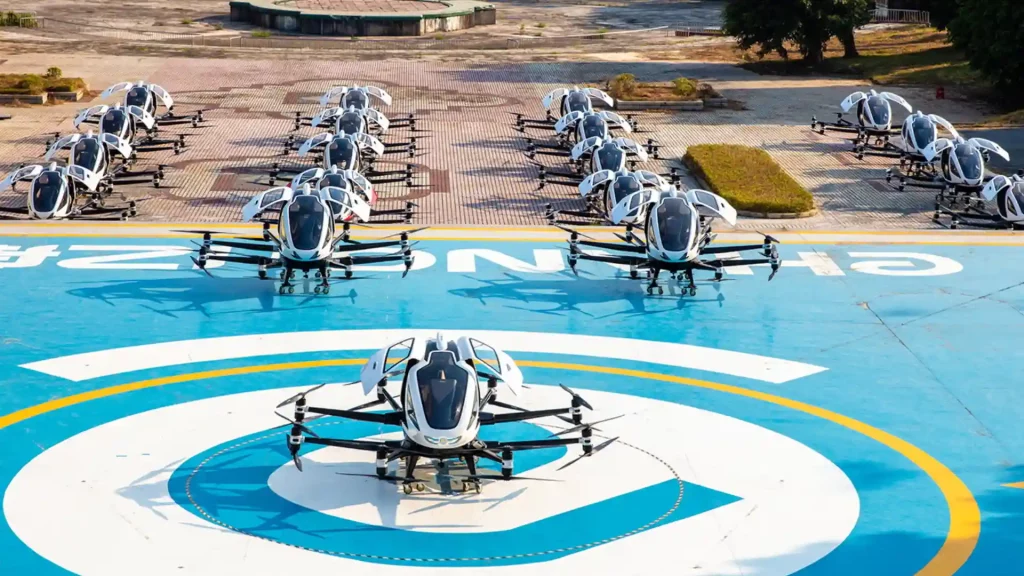The full introduction of autonomous air taxis comes with a plethora of challenges. Regulatory compliance is one of the key hurdles.
In a historic leap towards making science-fiction reality, Ehang, a China-based aerospace company, has achieved the seemingly impossible by securing airworthiness certification for its pilotless, passenger-carrying air taxis, named EH216-S. These electric ‘vertical take-off and landing (eVTOL)’ aircrafts can carry up to two passengers or 300 kg of cargo and have the potential to redefine cities completely.
Ehang Has Pioneered the Future of Urbanism
The EH216-S air taxis are a historic leap in transportation technology. These vehicles have 16 electric motors, allowing them to reach speeds of up to 128 kmph in a travel range of 30 kilometres. The unique selling point of these air taxis is their fully autonomous operation. They will be controlled from a centralised command centre, overseeing every aspect of the flight, from flight status to routes based on real-time weather conditions.
The EH216-S does not rely on conventional infrastructure like airports or runways for take-off and landing. Instead, it can vertically ascend and descend from any flat surface, whether it’s a rooftop, parking lot, or urban park. Powered by electricity, they minimise harmful emissions, and batteries can be fully charged in just two hours. For passenger safety, they are designed with multiple features, such as backup batteries, emergency landing systems, parachutes, rotors, and communication links.
The Future of Urban Transport: Global Efforts
While Ehang’s achievement is a major milestone, the full introduction of autonomous air taxis comes with a plethora of challenges. Regulatory compliance is one of the key hurdles. Synchronising the laws and regulations of different countries will be essential for the widespread adoption of this technology. Furthermore, coordination with other aircraft sharing the airspace will require the development of new technologies and systems.
The technology also faces the challenge of gaining social acceptance and trust from the public. There will be a need to educate the public about the benefits, concerns, and norms of urban air mobility, such as noise levels, privacy, and environmental impact. To address these issues, Ehang has already begun public campaigns to raise awareness and instill public confidence in the technology.
Ehang is actively planning the launch of its inaugural air passenger service within a Chinese city, though specific details and dates remain undisclosed. In partnership with Xiyu Tourism, Ehang aims to promote local tourism and deploy at least 120 EH216-S units over the next five years. The company has also already received more than 1,200 overseas pre-orders, indicating massive international interest.
Ehang’s achievement marks a turning point in transportation. Air taxis have the potential to reduce traffic jams, shorten commutes, and provide new and efficient transportation options for passengers. With other ongoing projects not only in China but also in countries like the United States, Israel, and the United Arab Emirates, the era of air taxis is definitely upon us. No doubt about it, air taxis are poised to become a common sight in many cities worldwide in the coming years. We stand at the cusp of a future where ubiquitous flying taxis are no longer science fiction but a reality already taking shape.
